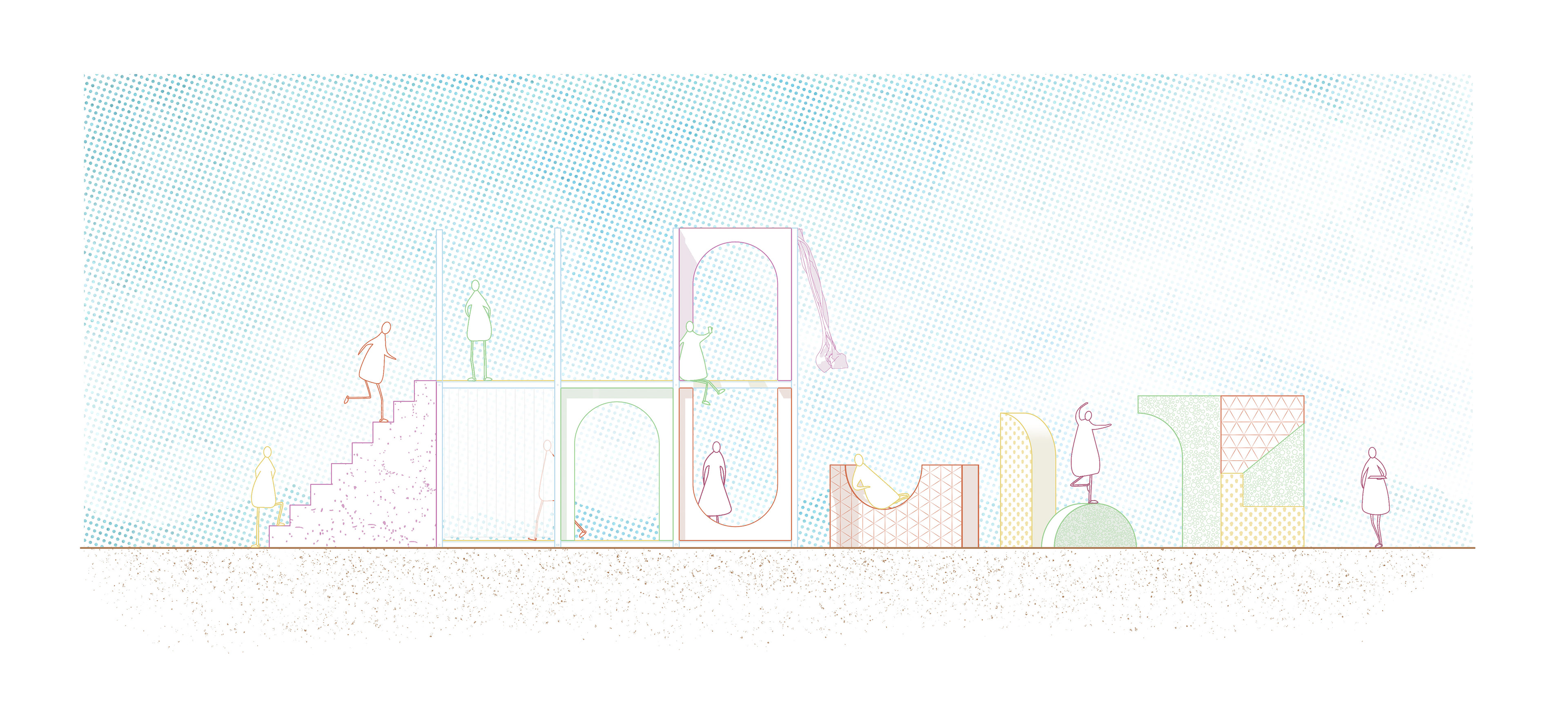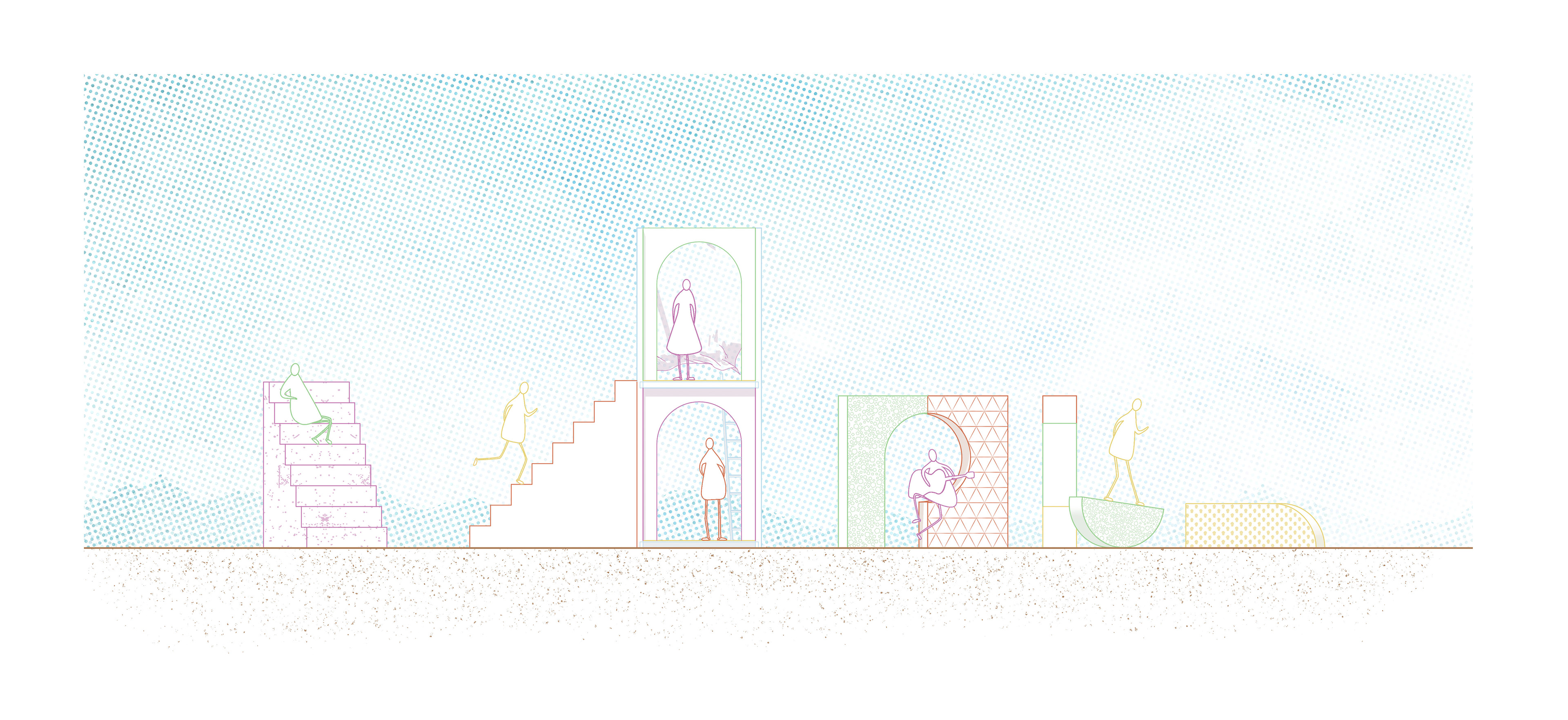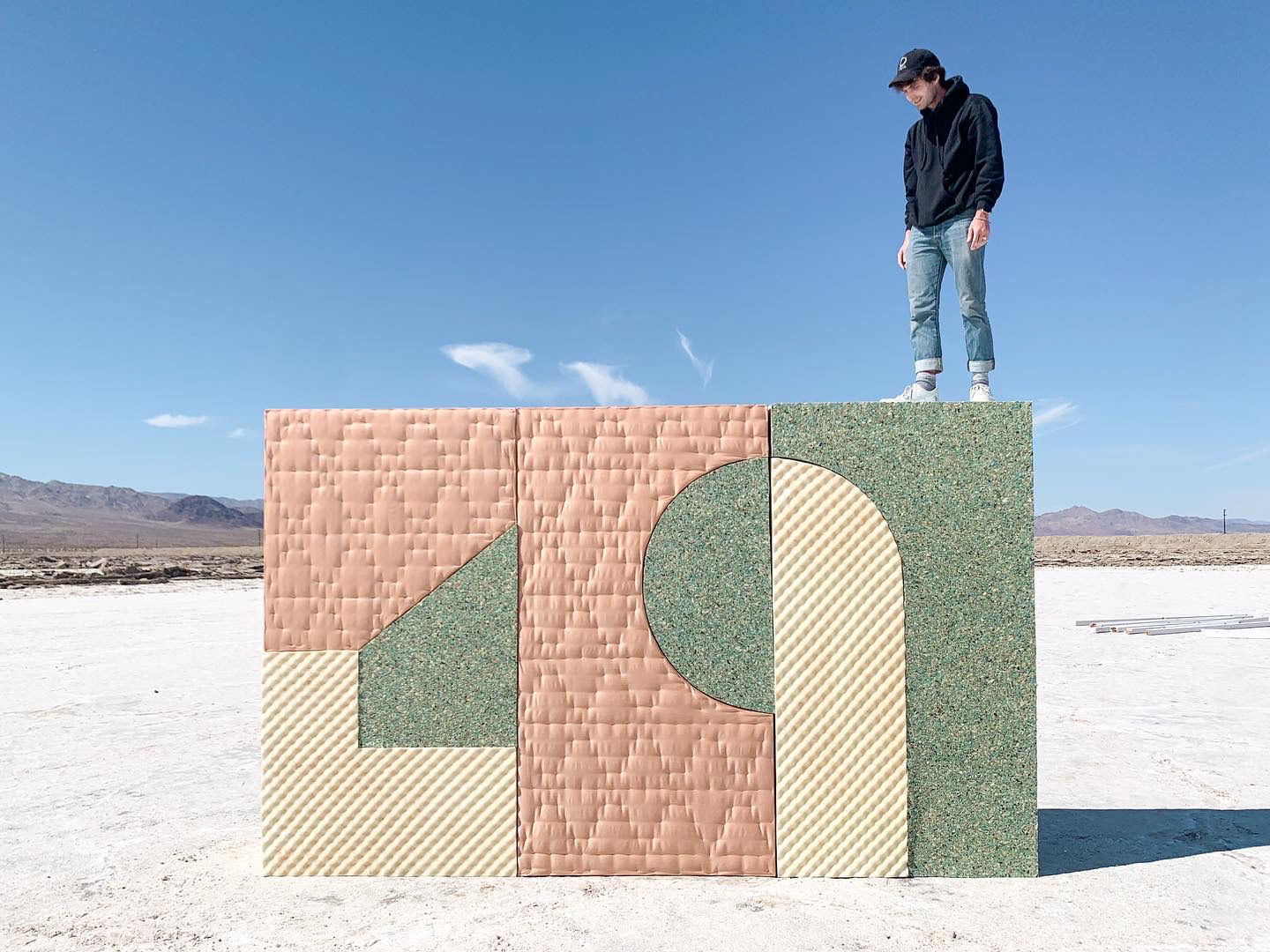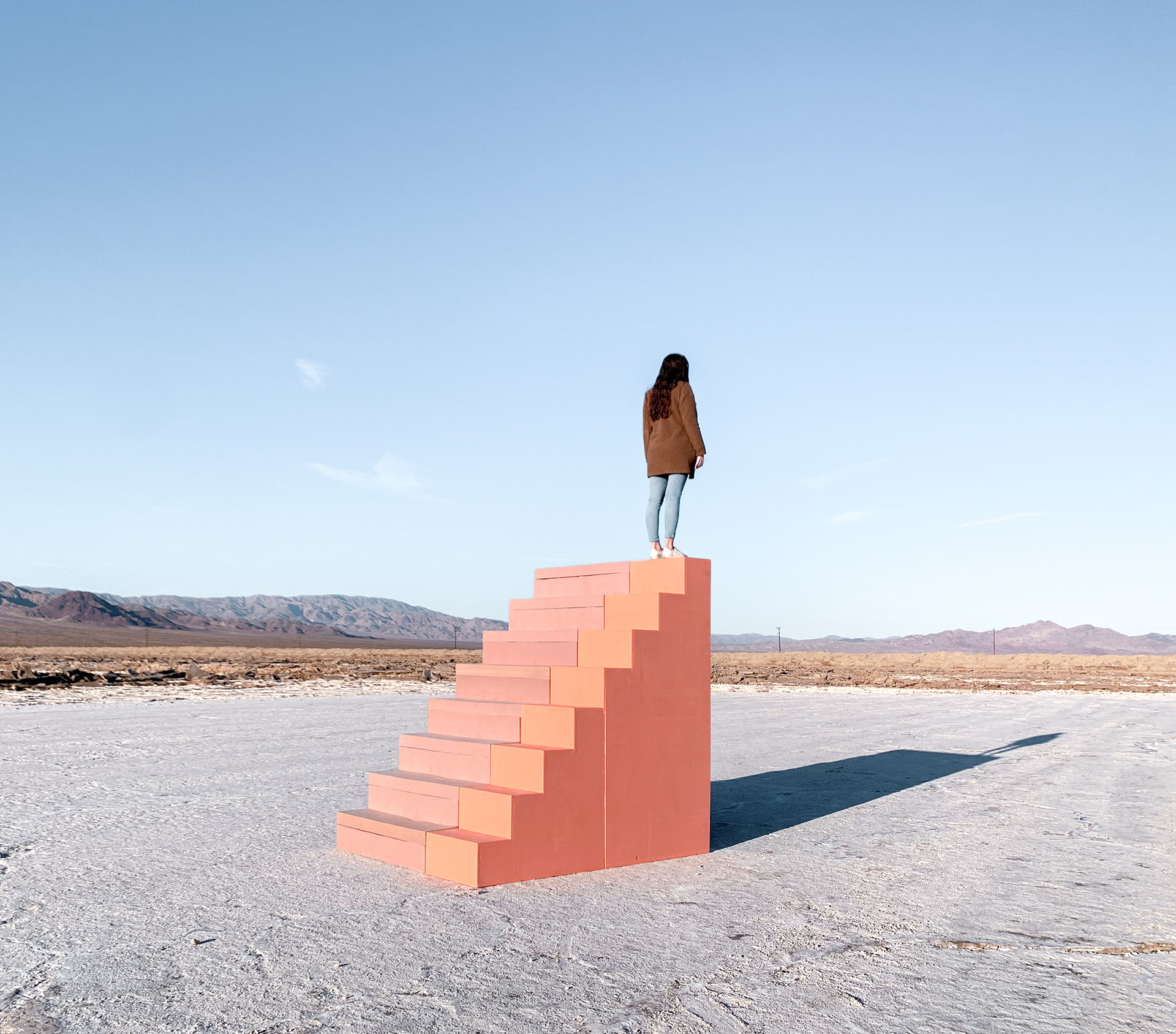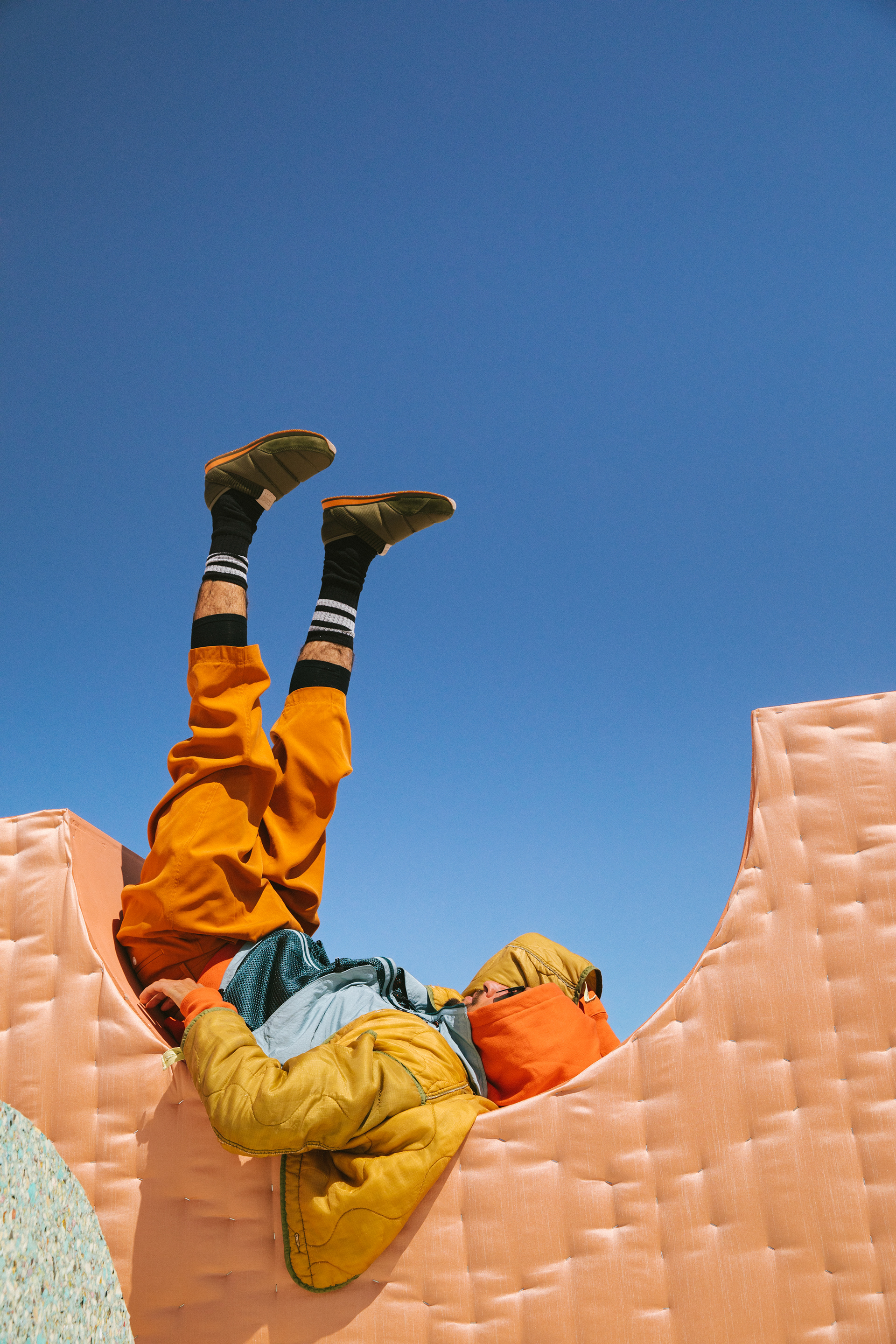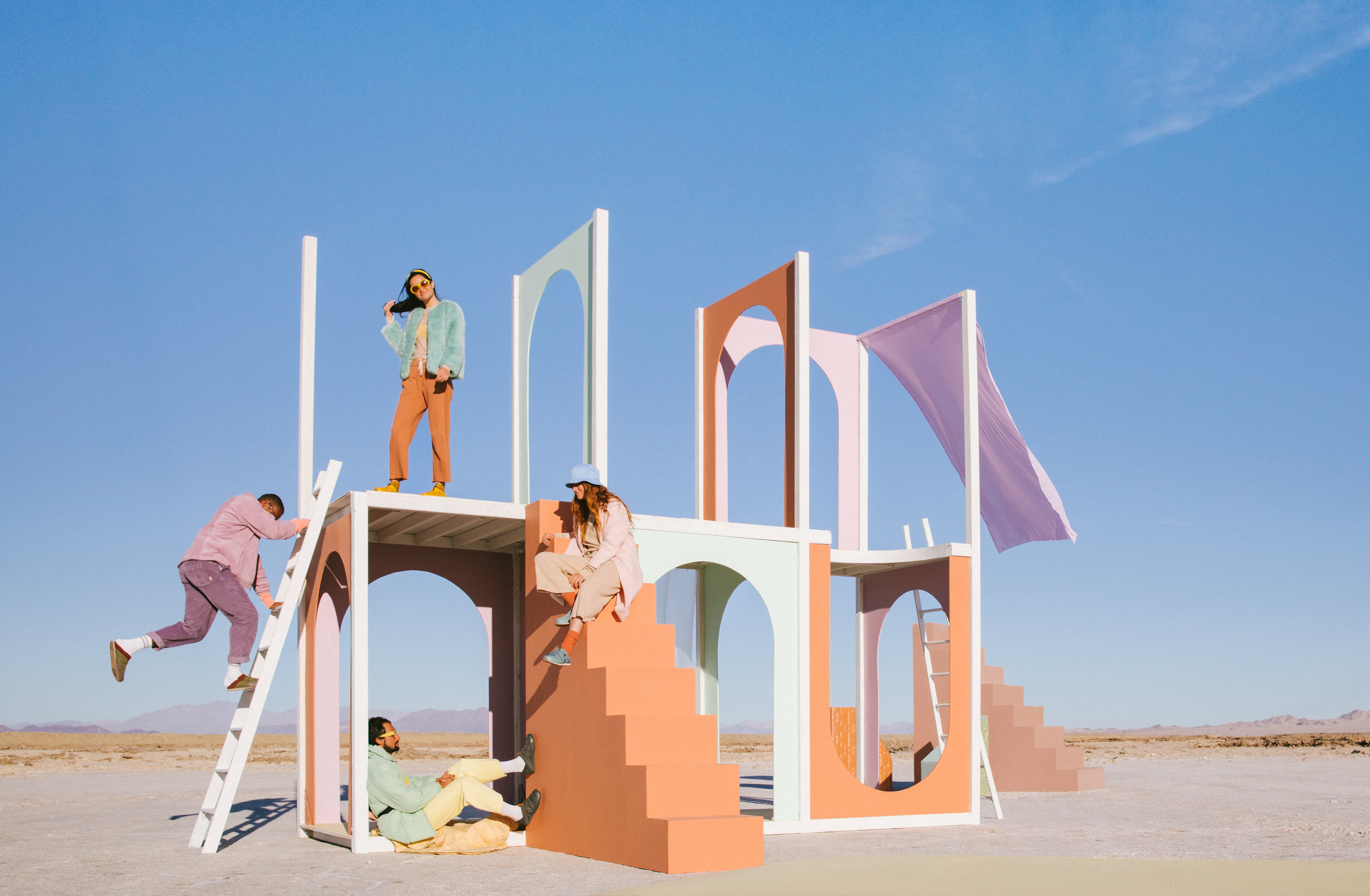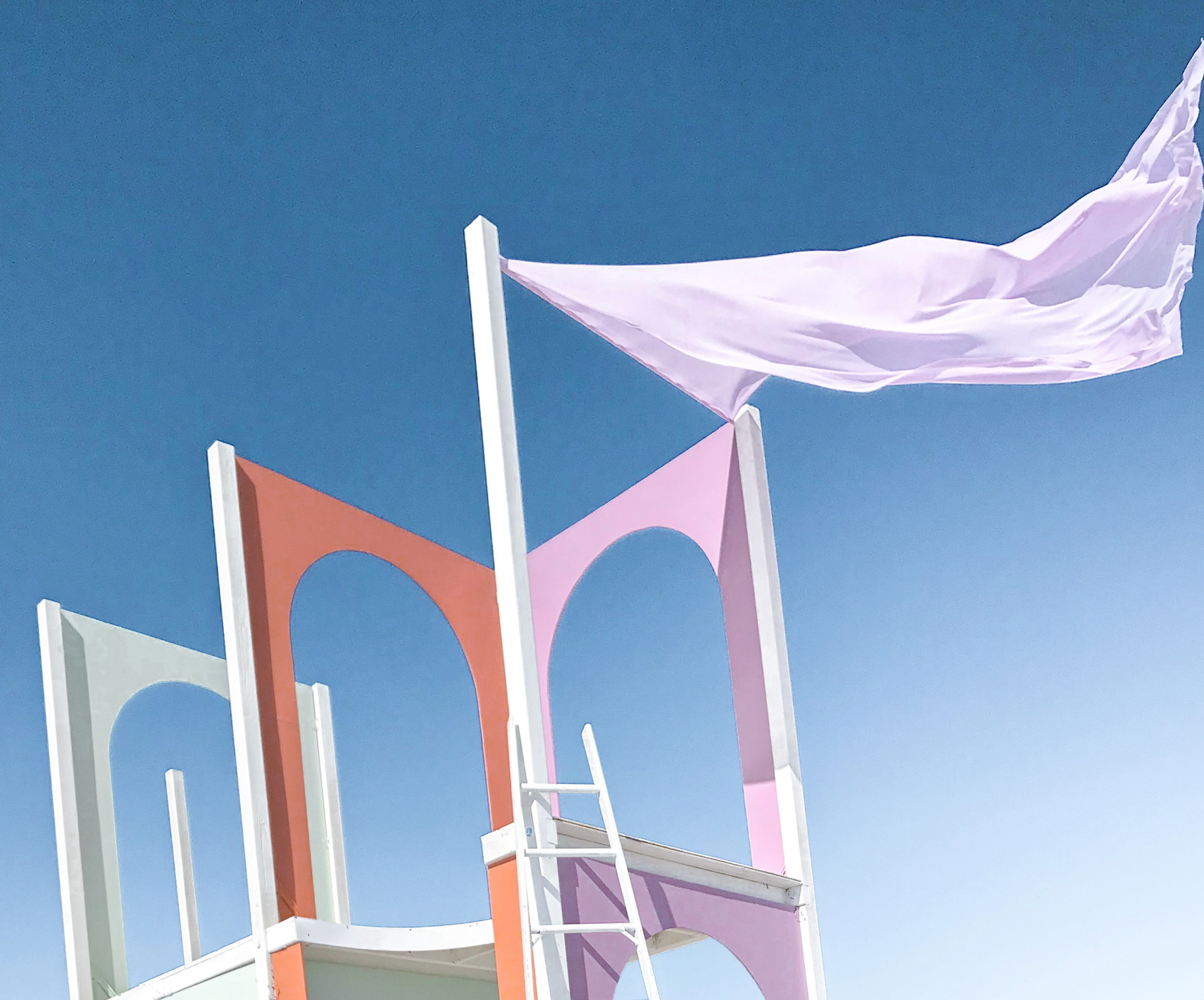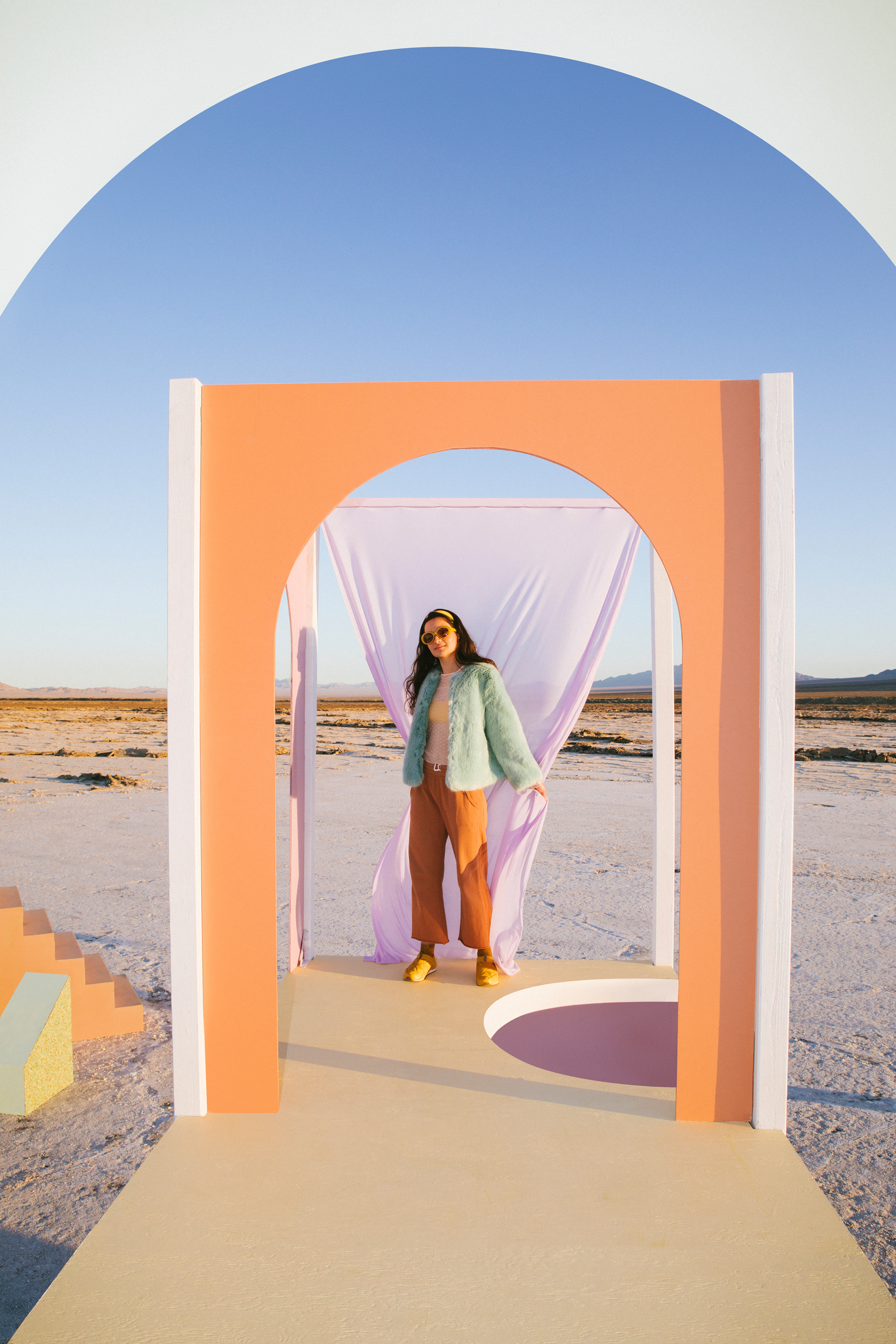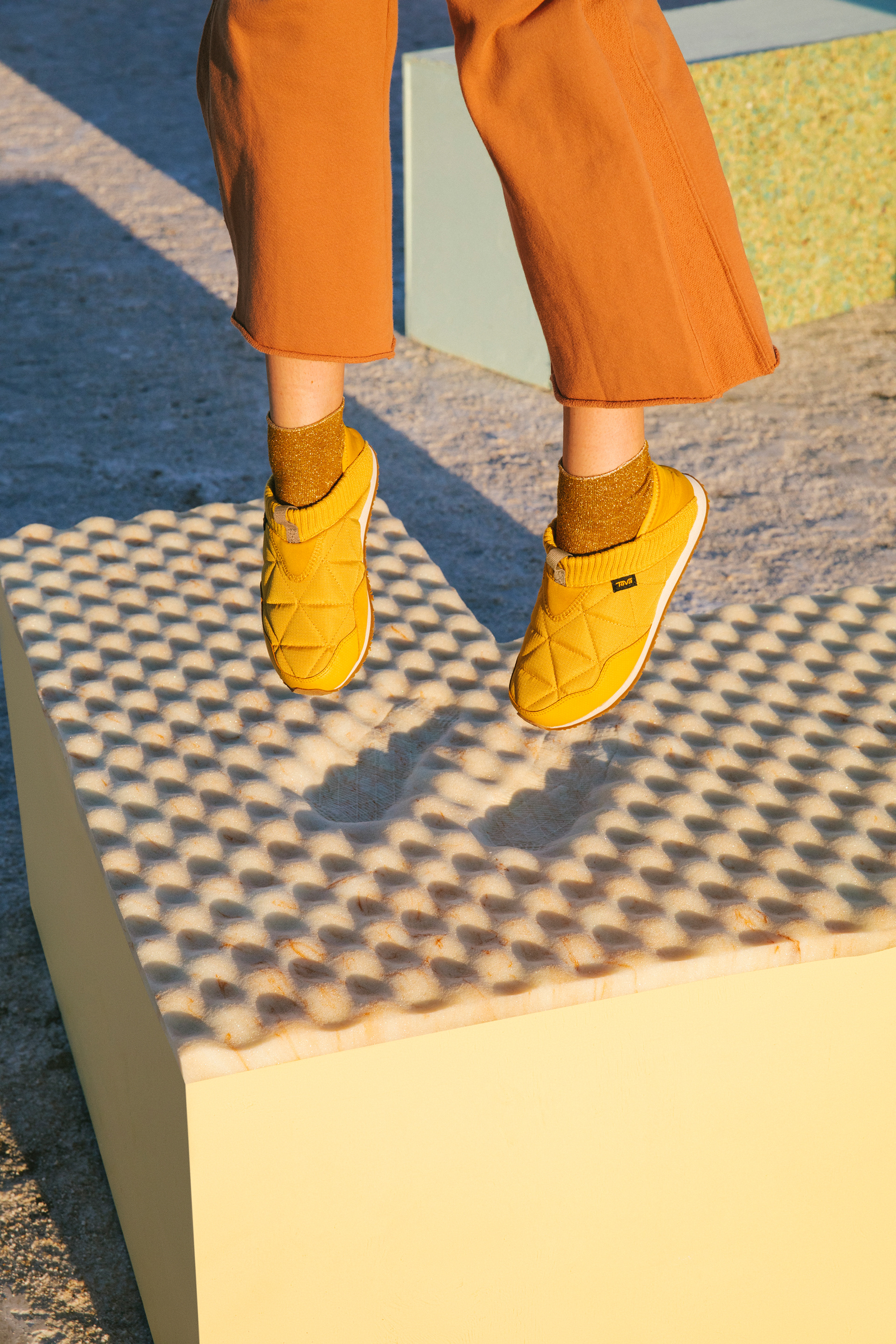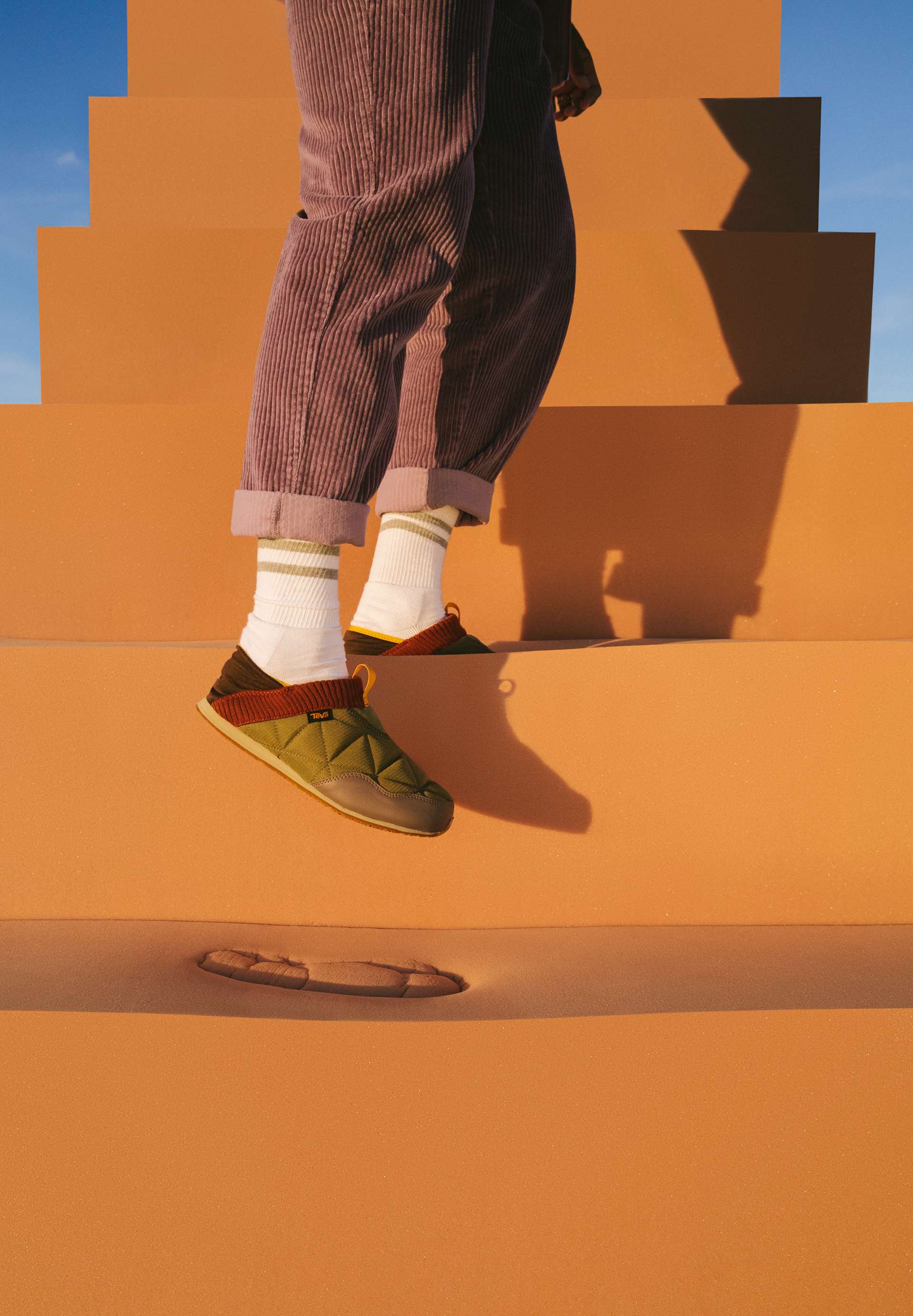REEMBER PLAYLAND
Amboy Salt Flats, California, 2021
Design - Build
Photographs by Steve Hoskins
The design of this set, built to showcase Teva’s new ReEmber shoe collection, was imagined as a recyclable Playland for adults. The installation consists of three distinct set-pieces, that when combined, form a series of interchangeable scenes instigating whimsical choreographies in users against the harsh backdrop of the Amboy Salt Flats. The first set-piece exists as a collection of interlocking blocks that can be stacked, like a puzzle, into a wall or disassembled and arranged to create various interactive spaces. The second set-piece includes two staircases, one plywood and one clad in soft foam, that can separately act as circulation or be put together to form a monolithic ‘stair to nowhere.’ Finally, the last set-piece stands tall on the landscape as a two-story fort made from uniform bays, each mounted with interchangeable material inlays including colorful arches, vinyl plastic, and shimmering curtains.
Just as Teva’s ReEmber sneakers are made using recycled materials in nearly every part of the shoe, the design and fabrication of the Playland was likewise geared toward reducing waste. The use of low-stick adhesives, non-permanent fasteners, and conventional dimensioning allowed for an ease of disassembly without damaging any elements and enabled the re/upcycling of virtually all project components. Foremost, the frames of all the structures were made from locally purchased lumber that was donated to various Oakland makers after disassembly. Additionally, the stairs were covered with acoustic foam that was removed and gifted to a recording studio, and many of the interlocking blocks, clad with recycled foam products, were repurposed post-shoot as furniture/product displays at select retailers throughout the California Bay Area.
With the design of the set, we wanted to take the contradictory and subversive approach of the ReEmber shoe—rendering the silhouette of a sneaker using soft, flexible materials—and apply it to other traditionally rigid forms and thought processes. We wanted to ask ourselves: what would it look like to build a staircase out of foam? What would it look like to upholster a wall? And furthermore: how can we build something new using old and recycled materials? How can we live sustainably in a world with limited resources? Ultimately with the installation, we hope to coax people back into a state of childlike wonder so that they may reengage the world with a more playful and hopeful attitude.
